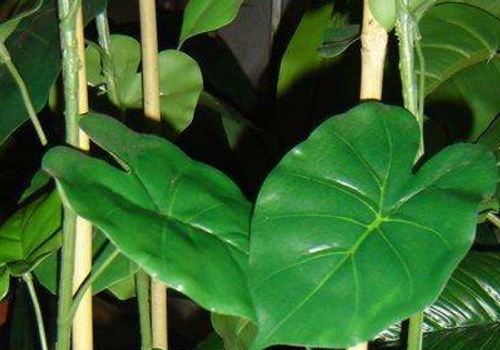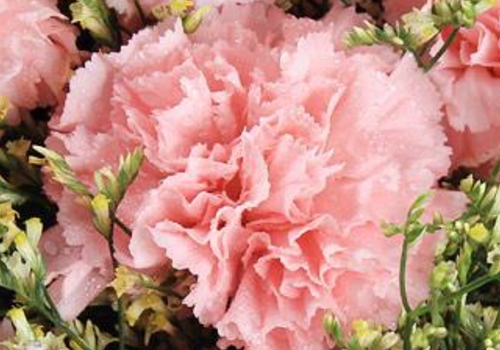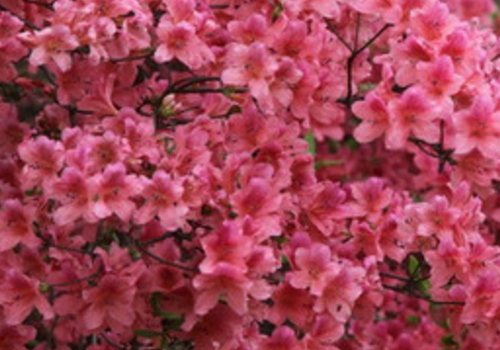Why Dishui Guanyin has rotten roots and smooth sailing?
Many people have seen Dishui Guanyin, but they just don't know its name. Why does dripping Guanyin have rotten roots? The difference between plain sailing and plain sailing?
Why Dishui Guanyin has rotten roots:
1. The soil dripping Guanyin rotten root is mainly caused by the dripping Guanyin basin soil is too wet, the basin soil is too wet, it is easy to cause the dripping Guanyin rhizome rot phenomenon, the reason for the basin soil too wet may be that you watered too much, resulting in stagnant water in the basin, it is also possible that the soil is sticky, poor air permeability, and it is easy to accumulate water.
2. The phenomenon of root rot often occurs in dripping Guanyin mainly because the tissue of dripping Guanyin stem is relatively loose, which may cause rotting root and stem rot if the water quality is very poor. And hydroponic dripping Guanyin do not put the roots in the water, but put the roots in the water, and the other roots should be left in contact with the air, which helps the roots to breathe. The roots of the dripping Guanyin are outside, and the roots are half in the water and half in the air, which is beneficial to the breathing of the roots.

The difference between dripping Guanyin and plain sailing:
I. differences between families and genera
1. Plain sailing: plain sailing is a perennial herb of plant kingdom, angiosperm phylum, Monocotyledon class, alisma subclass, Araceae, Araceae and Taro.
2. Dishui Guanyin: Dishui Guanyin is a large evergreen herb of plant kingdom, angiosperm phylum, Monocotyledon class, alisma subclass, Flower order, Araceae, taro family and taro.
II. Morphological differences
1. Plain sailing: smooth sailing with short rhizomes, long oval-lanceolate leaves, acuminate at both ends, obvious veins, long petiole, sheathlike base, scape erect, higher than foliage, spawn upright, slightly curled, white, fleshy inflorescences cylindrical, white.
2. Dripping Guanyin: Dishui Guanyin has creeping rhizome, erect aboveground stem, most leaves, petiole green or dirty purple, spiral arrangement, leaf subleathery, petiole and middle rib become black, brown or white, inflorescence petiole 2-3 clump, flame bract tube green, cornice bud green, yellow-green, green-white when flowering, yellow, white, boat-shaped, berry red when withered.
III. Alias difference
1, plain sailing: plain sailing, also known as white palm, bract taro, peace taro, lily intention, white crane taro, etc., originated in Colombia, is one of the most popular indoor foliage plants in Europe.
2. Dishui Guanyin: Dishui Guanyin is also known as taro, wolf venom, wild taro, taro, big root taro, etc., as an ornamental plant, it is called dripping Guanyin, which is native to South America and is a common ornamental plant in the tropics and subtropics.
Fourth, the difference of flower language.
1. Plain sailing: the flower language of plain sailing is plain sailing, beautiful flowers and leaves, light and colorful, exuberant growth, and shade resistance, so it is favored by people and is often used for indoor beautification and decoration.
2. Dishui Guanyin: the flower language of Dishui Guanyin means like-minded, sincere, interesting, elegant, and so on. Under the conditions of warm and humid air and sufficient soil moisture, water will drip down from the tip or edge of the leaf, and the flowers are like Guanyin, so it is called Dishui Guanyin.
All right, that's all for the reasons for the rotten roots of Dishui Guanyin, all of you understand.
Smooth sailing leaves yellowing Guanyin breeding method, dripping Guanyin leaves yellow rotting roots how to do
The bulbs and leaves of dripping Guanyin can be used medicinally, but they are highly toxic and their leaf juice will be poisoned at the entrance, so it is not suitable to raise Dishui Guanyin if there are pets or children at home, so as to avoid tragedy. This is an extra point to pay attention to in aquaculture Di Shui Guanyin. Now let's learn about the culture method of Dishui Guanyin.
The culture method of dripping Guanyin, what if the leaves of dripping Guanyin have yellow rotten roots?
The bulbs and leaves of dripping Guanyin can be used medicinally, but they are highly toxic and their leaf juice will be poisoned at the entrance, so it is not suitable to raise Dishui Guanyin if there are pets or children at home, so as to avoid tragedy. This is an extra point to pay attention to in aquaculture Di Shui Guanyin. Now let's learn about the culture method of Dishui Guanyin.
Dripping Guanyin culture method, dripping Guanyin leaves yellow, rotten roots how to do?
[plant archives]-
English name: Dishui Guanyin (formerly known as sea taro or aunt taro)
Scientific name: Alocasia macrorrhizos
Aliases: taro, Stellera chamaejasme (Guangdong), wild taro, mountain taro, big root taro, Tianmeng
Family: Araceae of Araceae
Genus: Alocasia
Distribution of origin: originated in South America, distributed abroad in Bangladesh, northeast India, Laos, Cambodia, Vietnam, Thailand to the Philippines. It is also found in south-central, western to southeastern Yunnan Province, Sichuan, Guizhou, Hunan, Jiangxi, Guangxi, Guangdong and coastal islands, Fujian and Taiwan.
Morphological features: perennial herbs, broad leaves, if the environmental humidity is too high, will drop water from its broad leaves, its flowers are fleshy inflorescences, there is a large green spawn, developed into a boat, like the statue of Guanyin.
The culture method of dripping Guanyin-
Dishui Guanyin is an ornamental flower plant that likes warmth, humidity and plenty of sunshine. It is in full bloom from February to April and dormant from November to May and June of the following year.
The growth temperature of Dishui Guanyin is 20-30 ℃, and the lowest temperature can withstand 8 ℃. Dishui Guanyin likes a semi-overcast environment and should be placed in an environment that can be both shaded and ventilated.
Dripping Guanyin especially likes to be wet. During the growing season, not only the basin soil is wet, but also the air humidity is not less than 60%. It is necessary to strengthen water spraying at high temperatures in summer and control watering in winter. Spraying warm water once a week can keep its leaf color dark green, otherwise it will easily lead to dripping Guanyin rotting roots.
Dishui Guanyin can be cultivated in nutrient soil mixed with rotten leaf soil, peat soil, river sand and a small amount of retted cake fertilizer, and can also be cultured in hydroponics. Dripping Guanyin likes fertilizer, so liquid fertilizer should be applied every other month from March to October, in which the proportion of nitrogen element can be increased properly, and fertilization should be stopped when the temperature is below 15 ℃.
What if the dripping Guanyin leaves turn yellow?
If Dishui Guanyin is not handled properly, it will cause the leaves to turn yellow. To sum up, the reasons for the yellowing of dripping Guanyin leaves are mainly caused by the following points, which can be dealt with separately according to the causes.
Dripping Guanyin likes to scatter light. If the sun is too strong, the leaves will turn yellow due to sunburn.
For a long time, Dishui Guanyin was placed in the living room, bedroom, etc., due to lack of light or lack of light, the leaves showed yellow due to lack of chlorophyll.
When dripping Guanyin is too dry or too wet for a long time, or often poured "half of the water", the leaves will droop and turn yellow.
If the leaves are not cleaned for a long time, the dust hinders the normal photosynthesis and also makes the leaves of Dishui Guanyin droop and turn yellow.
What about dripping Guanyin rotten roots?
Although dripping Guanyin is not strict on basin soil, the clayey soil with poor air permeability is prone to stagnant water and root rot, so basin soil with good drainage, fertility and partial acidity should be selected.
The phenomenon of root rot often occurs in dripping Guanyin in water culture, because the stem tissue of dripping Guanyin is relatively loose, and it is easy to cause rotten root and stem rot if the water quality is poor. The treatment method is to keep the bottle water clean, change the water or nutrient solution, wash the mucus on the tubers and roots, and cut off the rotten roots. There are also netizens' experience that the bearded root of dripping Guanyin is put in the water, while the root of the spherical part is cultured separately from the water. Once the spherical root is found to be rotten, cut it off and wash it as soon as possible. Continuing to maintain separation from water is a better way to prevent dripping Guanyin from rotting roots.
Conclusion: the above content is mainly divided into three parts, which pertinently answers netizens' doubts about Dishui Guanyin culture method, Dishui Guanyin leaves yellowing, Dishui Guanyin rotten roots, and provides solutions. I hope you can find the information you need to make your Dishui Guanyin grow healthily and luxuriantly.
[related recommendations]
Poppy evening incense rose rhododendron lavender green pineapple bamboo bean valve green hyacinth crane cherry calla
African jasmine rose spring festival flower succulent plant tropical plant tequila canna forget-me-not dandelion
Taxus chinensis var. mairei cotton sweet-scented osmanthus flower hydroponics plant home fengshui plant bedroom fengshui plant plum blossom aloe
Jasmine radiation protection plant Tongqian grass potted bonsai making drug plant mistletoe indoor flower rich tree evergreen rich bamboo
Potted production of anthurium mint stone flower geranium garden crab claw orchid plain sailing tiger skin orchid Kunlun snow chrysanthemum water lily
- Prev

How can carnations blossom several times a year?
Carnations are very beautiful, and many people are planting them. How many times a year can carnations bloom? How do you raise it in water? Carnations can bloom several times a year: carnations are perennial herbs, one plant and one flower, and the flowering period is from April to September. If cultivated in a protected area, it can blossom all the year round.
- Next

Why is it that winter leaves are yellow?
Azaleas, is very good-looking, and sometimes there will be yellow leaves. Why do rhododendrons fall in winter? What happened to yellow leaves? Why azaleas fall leaves in winter: soil reasons, azaleas are a kind of plants that prefer acidic soil, continuous watering will make the soil alkaline
Related
- Fuxing push coffee new agricultural production and marketing class: lack of small-scale processing plants
- Jujube rice field leisure farm deep ploughing Yilan for five years to create a space for organic food and play
- Nongyu Farm-A trial of organic papaya for brave women with advanced technology
- Four points for attention in the prevention and control of diseases and insect pests of edible fungi
- How to add nutrient solution to Edible Fungi
- Is there any good way to control edible fungus mites?
- Open Inoculation Technology of Edible Fungi
- Is there any clever way to use fertilizer for edible fungus in winter?
- What agents are used to kill the pathogens of edible fungi in the mushroom shed?
- Rapid drying of Edible Fungi

